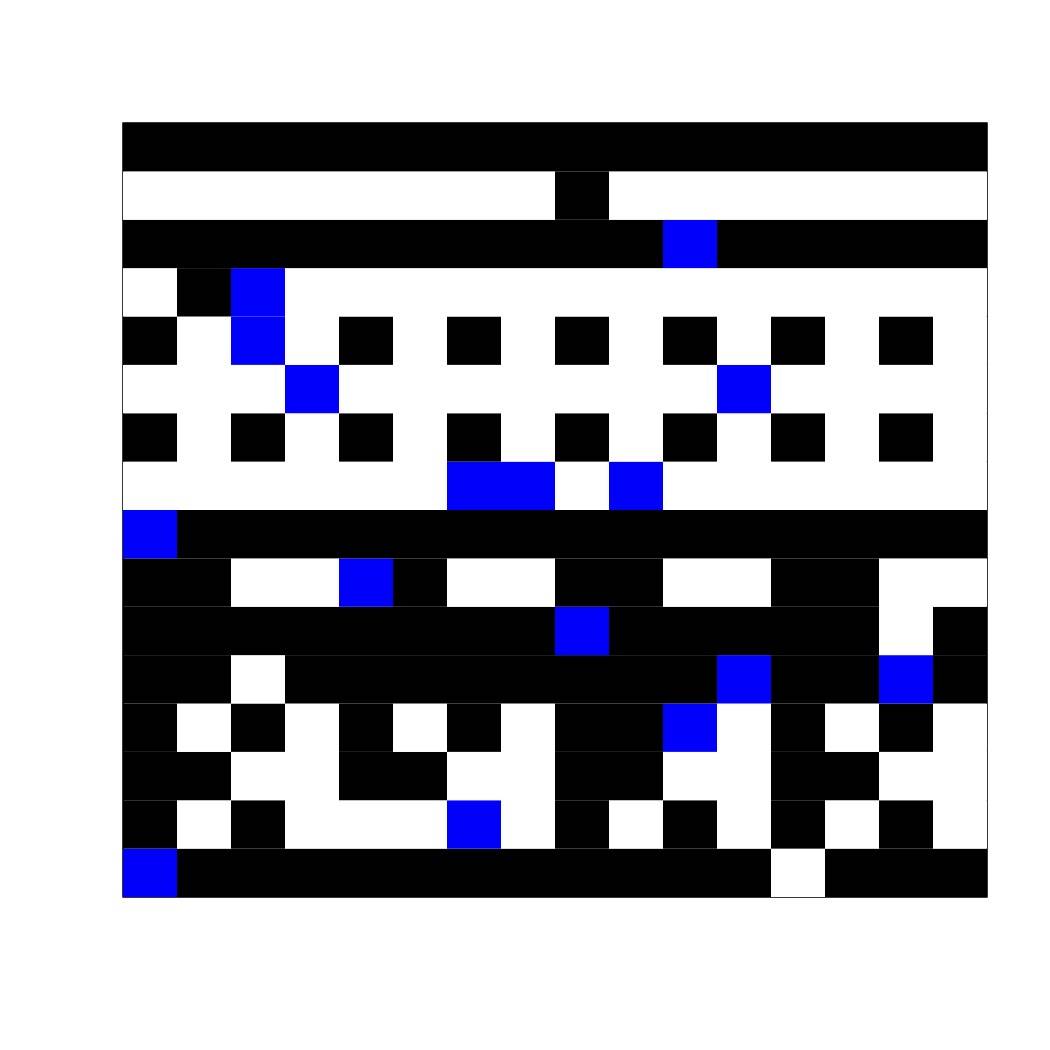A Scientific Test for True Intelligence
A scientific test should identify precisely what humans can do that computers cannot, avoiding subjective opinionWe need to reject subjective tests like the Turing test — which depends on whether people think that a computer shows true intelligence — and look for scientific and measurable tests. The tests should be based on problems that are well known to be difficult or unsolvable by computers but easily solved by humans. This is the avenue we need to go down if we really want to understand the nature of human intelligence and find out whether it is computable or not.
Here is a proposed test that I call the “broken checkerboard,” which you see below, composed of black, white, and blue squares:

The details are technical but the test is easy to demonstrate: You’ll observe regularities, along with some randomness. There are also a few odd blue squares. The goal is to correctly fill in the blue squares according to the regularity in the picture. For example, the top blue square is meant to be black because it lies on an otherwise unbroken black line.
The next blue square down is meant to be white, which might not be immediately obvious because there is a black square right next to it. However, it can be seen that the black square is most likely noise, and the otherwise white line is the regular pattern.
It turns out, this problem of correctly identifying whether the blue square should be white or black is computationally very difficult, even for problems of a small enough size that a human can solve them. It is based on the boolean satisfiability mentioned above, the first problem discovered to be NP-Complete.
Additionally, the number of possible problems grows hyper-exponentially and quickly exceeds the size of the universe, as we increase the problem size. So, if humans can easily solve the “broken checkerboard” problems, then the human mind is not reducible to any sort of computer algorithm.
The “broken checkerboard” is not the ultimate scientific test for intelligence that we need. But it is a truly scientific test in the sense that it is capable of falsifying the theory that the mind is reducible to computation. And this is the sort of test the AI research community needs to invest in. No more trying to discover flight by jumping higher with a pogo stick.
Previous: Current artificial intelligence research is unscientific. The assumption that the human mind can be reduced to a computer program has never really been tested. Because AI research is based on a fundamental assumption that has not been scientifically tested—that the human mind can be reduced to a computer—then the research itself cannot be said to be scientific.
and
What’s hard for computers is easy for humans. Some of the surprising things computers have a hard time doing and why. We often hear that what’s hard for humans is easy for computers. But it turns out that many kinds of problems are exceedingly hard for computers to solve. This class of problems, known as NP-Complete (NPC), was independently discovered by Stephen Cook and Leonid Levin.
See also: Math shows why the mind can’t be reduced to a formula. The Liar’s Paradox shows that even mathematics cannot be reduced to a fixed set of axioms. Gödel’s discovery brought back a sense of wonder to mathematics and to the rest of human knowledge. His incompleteness theorem underlies the fact that human investigation can never exhaust all that can be known. Every discovery builds a path to a new discovery.
